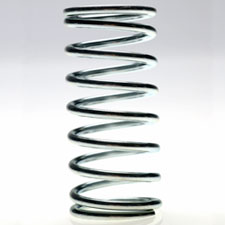 There appears to be a common belief that if you are stiff, you need to stretch or increase flexibility. These beliefs are unsubstantiated and often come with little evidence that stretching is good for you.
There appears to be a common belief that if you are stiff, you need to stretch or increase flexibility. These beliefs are unsubstantiated and often come with little evidence that stretching is good for you. Before I go on, I should qualify that I am not against stretching. If there is a functional reason to increase flexibility (more importantly, mobility) then I would recommend stretching. However there are a lot of reasons that we would want to maintain or even increase stiffness. Here are some of those reasons:
1. Increased stiffness increases power output
 Increasing stiffness increases power output. This is important for athletic performance and for daily activities. Think about it this way; if you were to hit a baseball for distance, you would prefer to hit it with a bat and not a pool noodle. Why? The bat is more stiff than the pool noodle and is better suited to transmit force to the baseball. Our body is the same way. Most of the time with activity, our goal is to "Stiffen" our core to transmit force to our limbs so we can kick or throw a ball, or even push open a door.
Increasing stiffness increases power output. This is important for athletic performance and for daily activities. Think about it this way; if you were to hit a baseball for distance, you would prefer to hit it with a bat and not a pool noodle. Why? The bat is more stiff than the pool noodle and is better suited to transmit force to the baseball. Our body is the same way. Most of the time with activity, our goal is to "Stiffen" our core to transmit force to our limbs so we can kick or throw a ball, or even push open a door. 2. Stiff muscles are like springs. More stiff = more speed
I find it interesting that with most athletic events, I see people stretching before a game. I would agree that this would be appropriate if someone was too stiff, but there is an optimal amount of stiffness for athletic performance and why would you spend time trying to get rid of it? Muscles in the body act like springs. A stiff spring would be better at producing increased speed as opposed to a loose spring (like a slinky). Again, I qualify, there is an optimal amount of stiffness. Too stiff is no good, but neither is too loose or flexible.
3. Increasing flexibility increases the chance for injury
4. Muscles don't really stretch much
Most of the time when we stretch, we believe that we are stretching out muscles. However, we forget about all the other tissues we are stretching including tendon, ligaments, nerves, fascia, collagen. In the chain of tissues we are stretching, muscle does not get stretched as much as we think. For example, if you stretch you hamstring in a typical hamstring stretch, the deep ache you feel in your hamstring is likely the sciatic nerve that is being stretched and not actually the hamstring. It would be like stretching an elastic band and a rope together. Both will only stretch so far, but the rope would limit the stretch of the elastic band.

5. Joints tend to stiffen up after injury
Joints try to stabilize themselves after there is injury to surrounding tissues. This is a common response to pain as increased movement typically causes increase pain (particularly if the joint itself is the pain generator). Isn't it interesting as therapists often prescribe stretches to "loosen up tight joints" when the body is trying to stiffen up to reduce movement of said joints?
Stiffness should not be seen as evil. I believe that more needs to be done to harness stiffness to improve performance and activities. Stretching is not a bad thing, however I find that it is often over-prescribed and poorly executed.


No comments:
Post a Comment